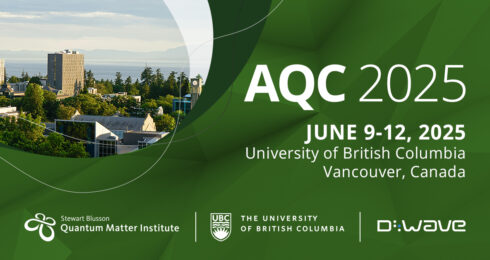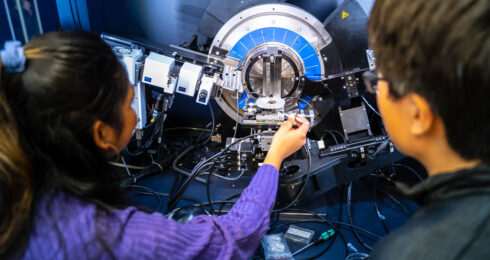Pinder Dosanjh has been awarded the President’s Service Award for Excellence (PSAE), the highest honour given to staff at the University of British Columbia (UBC). The PSAE celebrates staff members who have sustained exceptional contributions to the University. With more than 30 years on campus, Dosanjh has long been an influential member of the physics community at UBC, and the heart of the Stewart Blusson Quantum Matter Institute (Blusson QMI).
“Pinder is one of those people so deeply woven into all aspects of an institution that is difficult to imagine it without him,” said Doug Bonn, who first met Dosanjh, then a student, when he came to UBC as a postdoctoral fellow in 1989. The two worked closely with Walter Hardy throughout the 1990s. “From those early days, Pinder has been right at the heart of the emerging centre of research excellence that would eventually become Blusson QMI.”
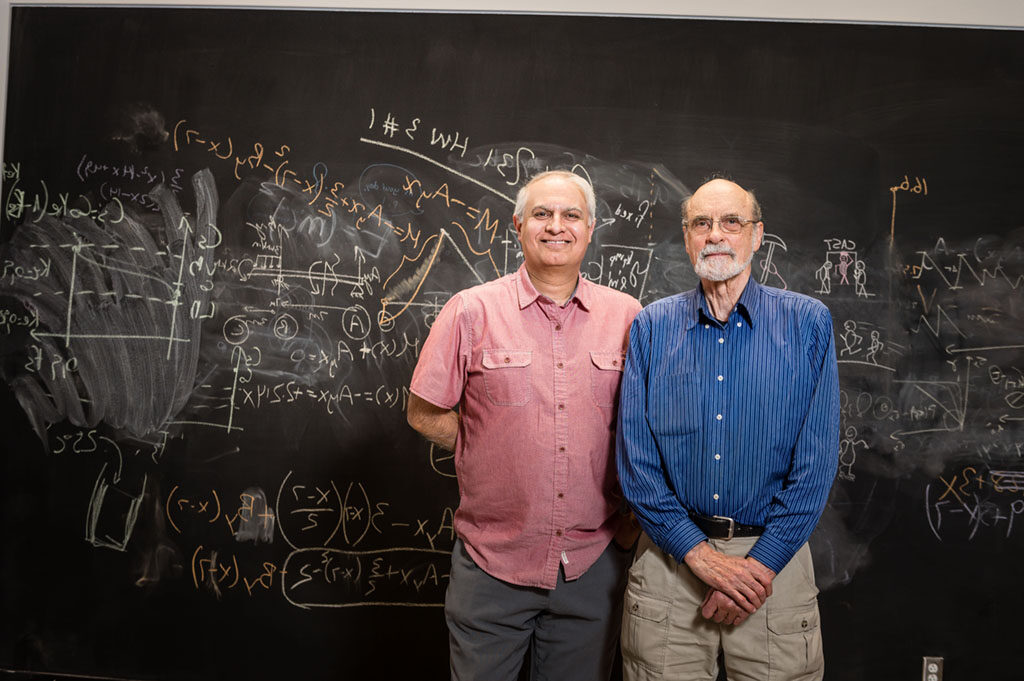
Pictured: Pinder Dosanjh (left) with Walter Hardy (right) in 2019. Image credit: Paul Joseph/UBC.
Dosanjh first took on the role of Research Engineer with the Department of Physics and Astronomy in the superconductivity lab in 1990, and since then he has been a driving force in developing the superconductivity research effort at UBC, from the development of critical infrastructure to training students to conducting his own research. Now Operations Manager, and leader of Blusson QMI’s Technical Operations team, he has demonstrated incredible success when it comes to publication metrics. For someone who has worked at the interface between science and operations, the level and impact of his scientific output—more than 71 publications, 2710 citations, h-index 24—is remarkable (and generally unheard of for someone in a Management & Professional role).
“It is unprecedented that he is able to excel so significantly in his day-to-day work and also produce a steady stream of academic research papers; since 2010, he has produced on average four publications per year with a steadily increasing body of citations,” said Andrea Damascelli. “He is unique at UBC, and to be frank, anywhere. His unique combination of skills and expertise has enabled him to be a catalyst for growth at Blusson QMI.”
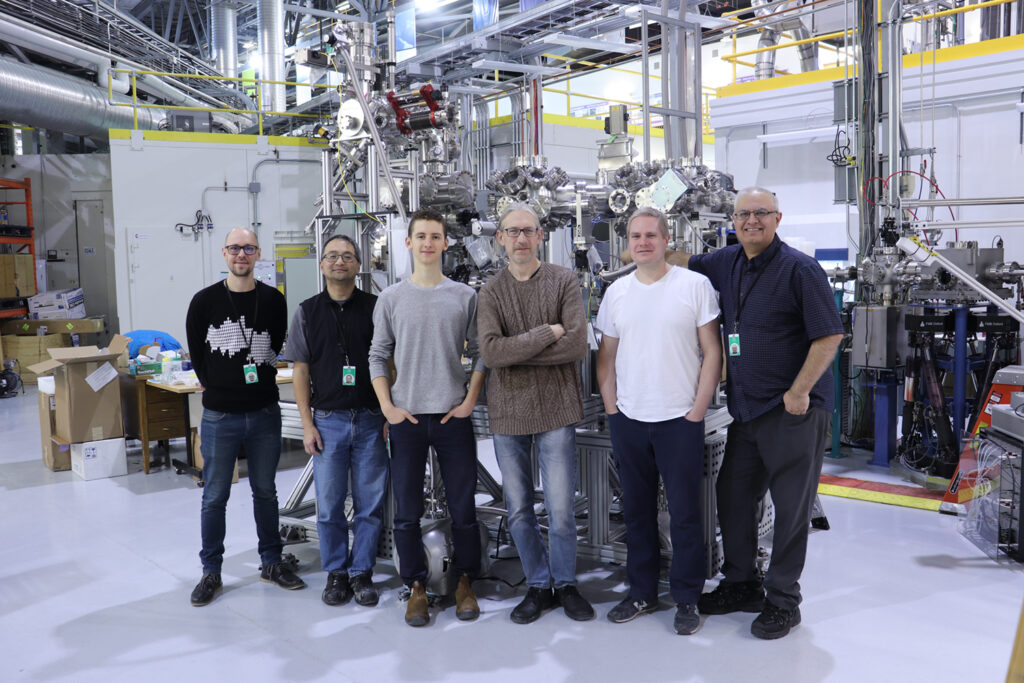
Pictured, left to right: Michael Schneider, Douglas Wong, Timothy Warkentin, Sergey Gorovikov, Tor Pedersen, and Pinder Dosanjh. Image source: Pinder Dosanjh.
Dosanjh is an influential member of the Canadian scientific community beyond his research output; he has been a leader in the development of a new $16.2 million CFI-funded beamline at the Quantum Materials Spectroscopy Centre (QMSC) at Canada Light Source (CLS). He led the project for over 12 years, from early design through to implementation, an effort that has enormous benefits for quantum materials research: the QMSC is a facility of national significance that is supported by 17 universities. Dosanjh has visited the CLS with his technical operations team several times over the past few months to install final components and bring the QMSC to completion.
His contributions to science at UBC and in Canada are considerable, but he has also quietly influenced generations of students through his hands-on approach to teaching and training. Dosanjh’s skills training for students has, over time, become established as a formal program. Now, Blusson QMI’s annual Summer Skills Workshops Series benefits students in the Quantum Pathways program as well as students in other undergraduate summer programs. In fact, the workshops are so valuable that they are even attended by many outside undergraduate programs, providing benefits to anyone looking to learn important research skills. He also worked with Harish Gautam to develop a student machine shop where students at any level can come to learn to design and fabricate research tools or instrument parts to support the work they do in the labs.
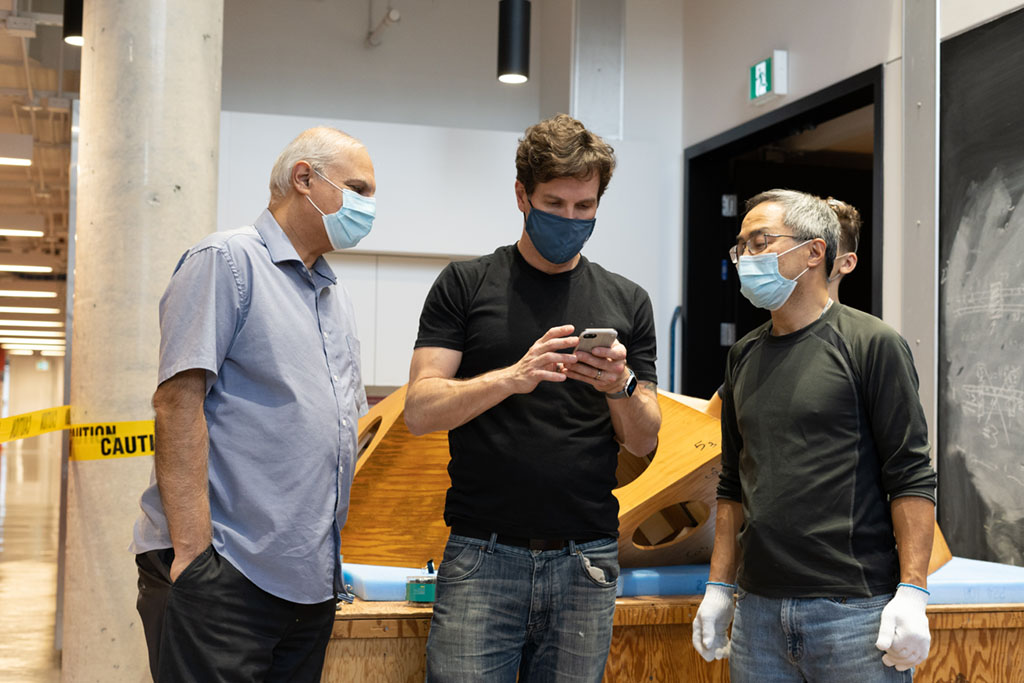
Pictured: Pinder Dosanjh left), James Day (centre) and Douglas Wong (right) do some quick math as they assemble The Frustrated Icosahedron, 2021. Image credit: Jingda Wu.
“Pinder holds an almost mythical status among students,” said Alexandra Tully, head of the Blusson QMI Student Committee. “When a graduate student first arrives at the institute, their best first move is to talk to Pinder. But although his expertise is varied and renowned throughout the institute, Pinder’s generosity is really what sets him apart: Pinder influences every aspect of this place for the better.”
During the first months of COVID-19 pandemic, Dosanjh sustained our critical infrastructure and worked closely with AMPEL’s Gary Lockhart to bring Blusson QMI and AMPEL back into operation earlier than other buildings on campus, while managing the complexity of working in compliance with emerging safety rules. In addition, he worked closely with UBC teams to ensure the safety and efficiency of COVID-specific research during the period when UBC spaces were closed; he navigated the research exemption process and got research teams back to work safely and efficiently, all while prioritizing important research activities.
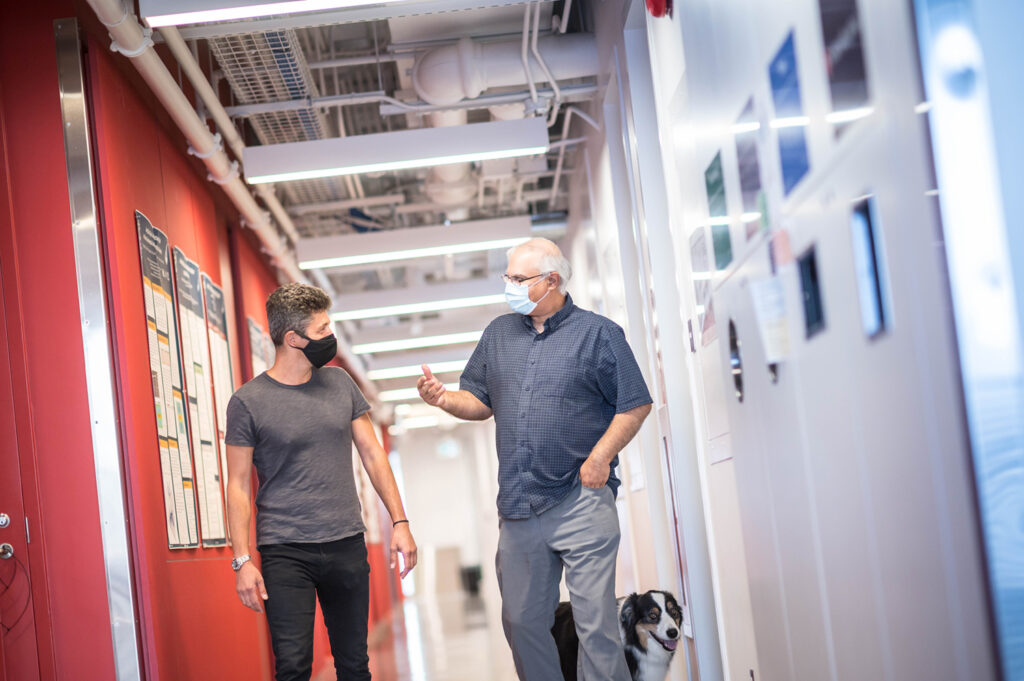
Pictured: Andrea Damascelli (left) walks with Pinder Dosanjh (right) and Hunter (dog) at the Stewart Blusson Quantum Matter Institute in late 2020. Image credit: Paul Joseph/UBC.
Dosanjh provides exceptional leadership, vision, and service to the Blusson QMI community. A calm, capable leader, he is as important to our culture as he is to our research. His warmth and enthusiasm for quantum matter have been a focal point for visitors: for donors, visiting students, or other guests, Dosanjh often demonstrates quantum phenomena using the levitation track he co-developed with Doug Bonn and Walter Hardy as a graduate student. Through this simple but compelling demo, Pinder has made quantum science more accessible, providing an entry into a very complex topic with playfulness and fun. Dosanjh makes Blusson QMI memorable and is himself a memorable part of Blusson QMI for anyone who has the good fortune to interact with him.
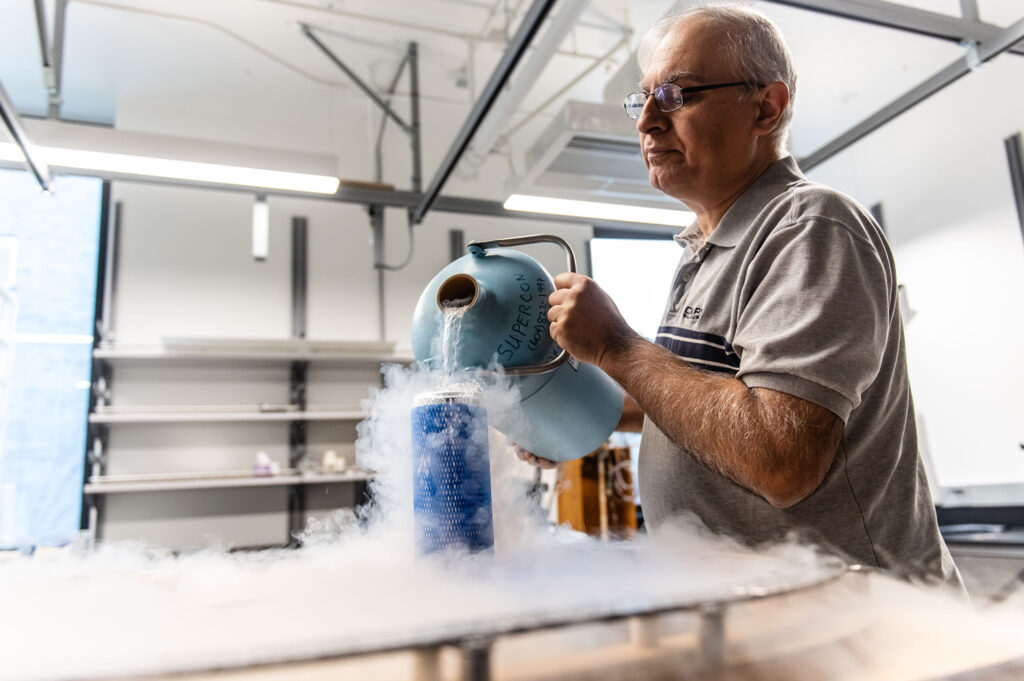
Pictured: Pinder Dosanjh pours liquid nitrogen into a cannister to prepare for the levitation track demo frequently shown to visitors at the Stewart Blusson Quantum Matter Institute. Image credit: Paul Joseph/UBC.
“Pinder brings an empathetic and supportive management style to his teams, and that warmth and supportiveness extends to the entire Blusson QMI community,” said Damascelli. “He is generous with his time and his insight, and the way he interacts with people and his willingness to help, mentor, and supervise young scientists speaks to his generosity and passion for the work that he does. There is no one quite like Pinder, and I am so proud that he is receiving this most-deserved and important recognition from the University.”
